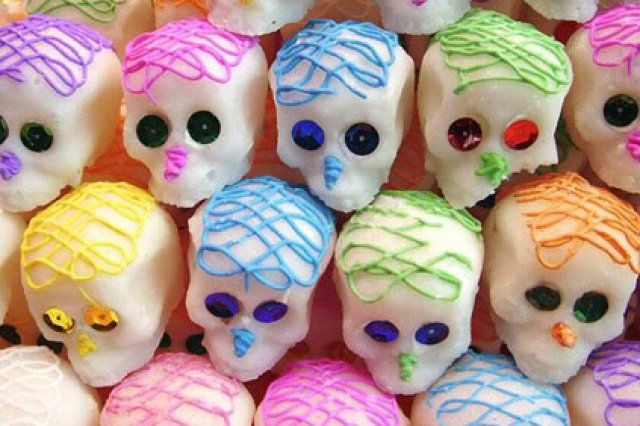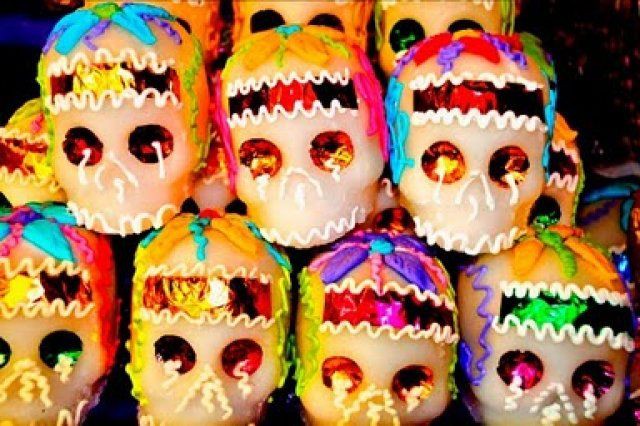Gastronomic traditions to celebrate the Day of the Dead in Mexico are the famous candy skulls. Made with artisan techniques, these are placed in altars and offerings as part of the decoration, they are a must in the altars and decorations for the Day of the Dead festivities. Here we will tell you all about them and why you can’t miss them!
They are a substitute for the skulls that in pre-Columbian times were used in the Tzompantlis to honor their gods. They recall the ever-present death, the inevitable passage from the earthly to the mystical. In November they appear in different sizes, decorated with wreaths, spirals and multicolored fretwork. Some have the name of the deceased, others are given with the name of the living, reminding them of their inevitable destiny.
Sweet skulls and their meaning
The sweet skulls are, along with the pan de muerto, one of the most important gastronomic traditions within the celebration of the Day of the Dead in Mexico and are mostly made of sugar, amaranth or chocolate, these skulls are considered as a handicraft, and have their origin in the pre-Hispanic era, as previously mentioned.
They usually have different names, which can have two meanings:
- The first, refers to the name of the deceased that you want to remember by placing it in the ofrenda.
- The second refers to a person who is still alive, so giving a calaverita to that person means that you keep a space for him/her in the underworld, besides reminding him/her that the only thing we have for sure in this life is death.
Preparation
The technique for the elaboration of the calaveritas is similar to that of the alfeñique handicraft, which is made in Toluca, Guanajuato and other parts of the country. The basic materials of alfeñique are very simple: sugar, egg white, lemon and a binding substance called “chautle”: corm or pseudobulb of an earth orchid (Bletia campanulata). However, the elaboration is delicate and requires dedication and patience.
For the skulls, the procedure is different and is called “vaciado”. The sugar is dissolved in water and boiled for half an hour until it thickens, adding a little lemon juice.
The artisan knows how to calculate very well the point at which the honey is ready to be “frothed” -that is, beaten quickly so that it crystallizes- and poured into the molds, which are generally made of clay, although wood and bronze molds are also used, made of various parts.

When the sugar begins to set, the mold is quickly turned over so that some of the honey inside drains out and the skulls remain hollow. Once dry, the skulls are removed from the mold and decorated with “betún”, made with egg white, powdered sugar and coloring; tin paper is used for the eyes.
With the same “casting” technique, small bottles, hearts and letters filled with a cheap liquor or simply with perfumed sugared water are also made.
Now that you know about this traditional Mexican candy, you can incorporate it in your own altar de muertos, please do not forget to tag us in your Day of the Dead pictures using #TYTDayoftheDead
San Miguel Times
Newsroom

